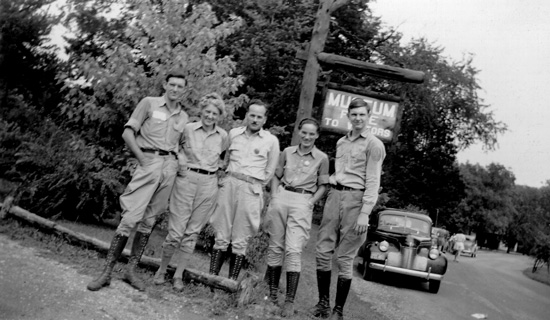History of Indiana State Parks
- Natural History
- Woodland Culture
- Pioneers
- Native Americans
- Conflicts & Wars
- The Beginnings of Indiana State Parks
- New Deal
- Recreation Demonstration Areas
- Interpretation
- Baby Boom and Beyond
Other resources

Naturalists in 1941
An important guiding principle for Richard Lieber was that each park should have a nature guide program. Indiana was among the pioneers of providing interpretive services to the public. Indiana’s first nature guide, Lucy Pitschler began in 1923 at McCormick’s Creek as a volunteer naturalist through the Nature Study Club of Indianapolis. Her work marked the beginning of interpretive services in Indiana State Parks.
In 1927-28, the Department of Conservation began funding nature guides for the first time at McCormick's Creek, Turkey Run and Clifty Falls. Beginning in 1973, State Parks introduced full time naturalists. Six state parks had permanent naturalist positions (Clifty Falls, Brown County, Turkey Run, McCormick's Creek, Indiana Dunes and Pokagon). The division also hired a full-time chief naturalist.
Lieber strongly believed in interpretation, saying “Our parks and preserves are not mere picnicking places. They are rich storehouses of memories and reveries. They are guides and counsels to the weary and faltering spirit. They are bearers of wonderful tales to [they] who will listen; a solace to the aged and an inspiration to the young.”
